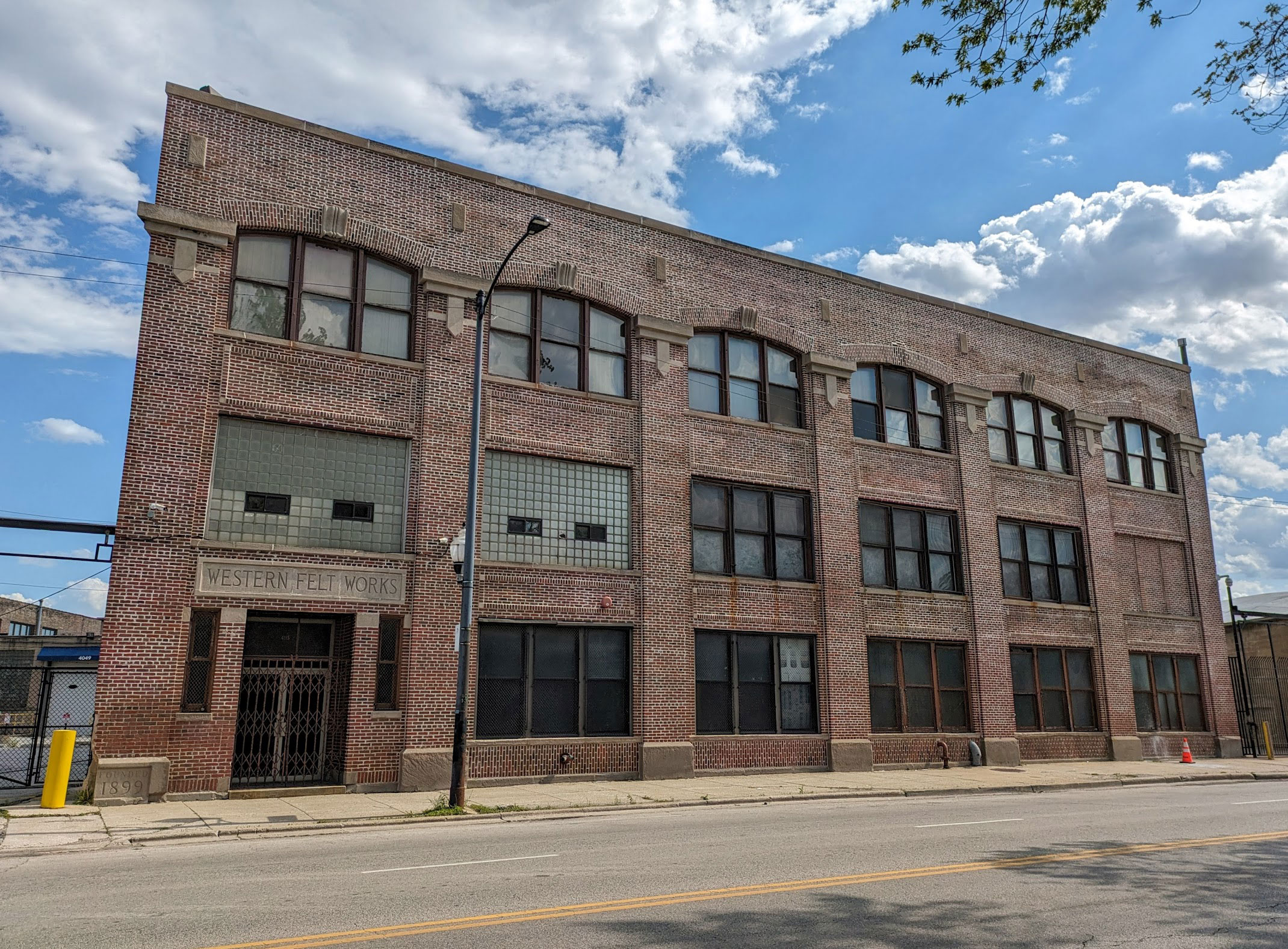An industrial real estate developer will present a proposal for a speculative logistics hub for North Lawndale to the Chicago Plan Commission this week for approval. The plan, which comes from Atlanta-based IDI Logistics, is to build a 246,000-square-foot, single-story warehouse with 26 loading docks on a 15-acre site along Ogden Avenue between Pulaski and Keeler avenues.
It’s the kind of development that quickly sprouted throughout the suburbs and near major transportation hubs during the pandemic-induced supply chain breakdown. Chicago, like other major metros, experienced a full-blown industrial boom where it seemed like there was unlimited demand for warehouses and logistics centers at the time. And in particular, the South and West sides of Chicago have witnessed a dramatic uptick in these developments.
But in this case, a series of century-old manufacturing buildings that have been identified as historically significant by preservationists would have to be wiped out to make room for the new development. There are also health and environmental concerns about the mass demolition of existing buildings and an influx of truck traffic and diesel exhaust near residential areas after the new logistics hub is opened. Additionally, there is uncertainty about the number — and quality — of jobs that would ultimately result from the development.
And here’s the other rub: 22nd Ward Alderperson Michael Rodriguez has told the community that he doesn’t support the proposal as-is. And in the hours leading up to the May 16 Plan Commission meeting, Alderperson Rodriguez sent a letter to Chairperson Laura Flores signaling that he wouldn’t support the plan for a logistics facility.
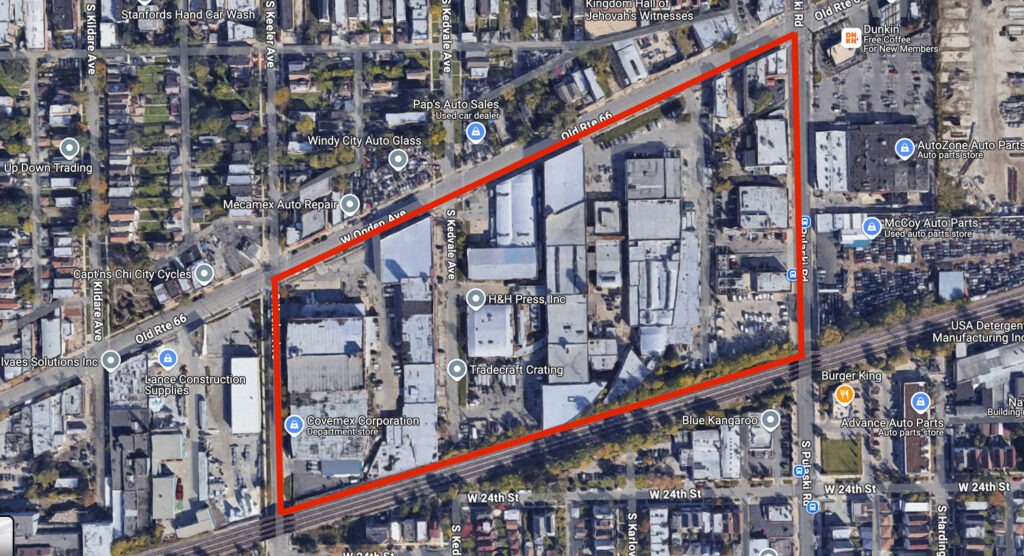
Regardless of the alderperson’s position and messaging to community members, developer IDI Logistics is moving forward, full steam ahead, with the demolition of 12 buildings located on Ogden, Keeler, and Kedvale avenues.
Roughly 50 people attended a meeting on May 13 to hear IDI Logistics execs and a panel of city officials and contractors discuss the demolition timeline and procedures. But the meeting quickly turned into a rebuke of the proposal and of the process and also raised a number of questions. While the developer is seeking to move forward with demolition of the 12 structures as of right now, community members questioned why they would proceed with a tear-down without having a formal agreement and Commission-approved plan for a new development in place. How many jobs will the logistics center actually create? And what happens to the site if nothing is ever built? There’s also a legal twist that could further complicate plans for the development.
Making Sense of the Jobs Claims
At the heart of the investors’ proposed benefit for the community is the promise of jobs: demolition jobs during the tear-down, construction jobs when erecting the new building, and then permanent jobs once tenants move into the space. Alderperson Rodriguez told Chicago that in an ideal scenario, there would be “high-paying, career-oriented employment there for working class people in the field of manufacturing.”
During Monday night’s meeting, IDI Logistics told residents that there could eventually be 120 to 150 permanent jobs located in their facility; however, this proposal is for speculative development without tenants currently lined up, and IDI said it’s difficult to predict the final outcome and number of permanent jobs. Residents predicted that the permanent jobs would be similar to those typically found in other warehouses or logistics centers, not the skilled manufacturing jobs the alderperson said the community hoped to see.
Plus, there were jobs and businesses in the Ogden and Keeler buildings up until recently. When asked how many tenant businesses were previously based in the buildings during the meeting, Steve Golumbeck, vice president for development with IDI Logistics, said that IDI didn’t have that information, so it’s unclear if IDI’s development will provide a net gain or loss in jobs. (When approached for remarks, a member of the IDI Logistics development team declined to comment on this story.)
One of those previous tenants was Crystal Portillo, whose prop and makeup business, Cirque FX, was located on the second floor of the old Western Felt Works at 4117 W. Ogden. Portillo said that when she first signed the lease for the space at the beginning of 2022, she had hoped to be there for several years. While a tenant, she had invested $25,000 in electrical, plumbing, and other improvements to her space.
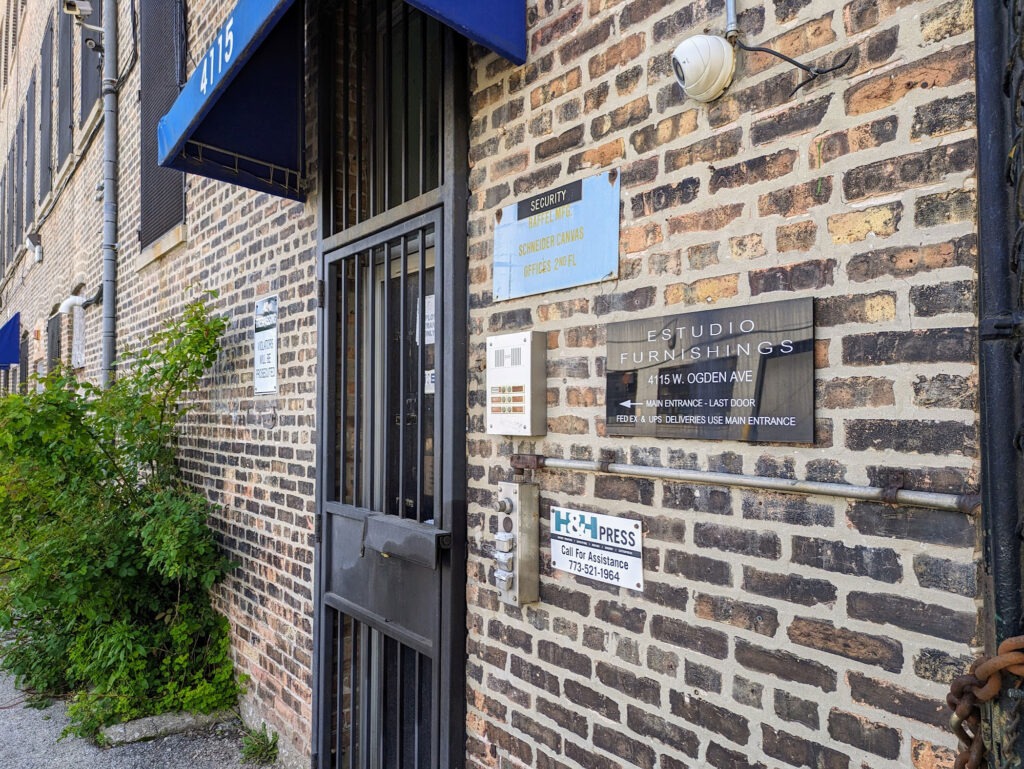
“I sunk thousands of dollars into that place,” she said. “And then nine months into my lease, the owner flagged me down while I’m rushing off to work and asked me to sign an estoppel — I didn’t even know what that was. I was like, ‘What is this for?’ And he was like, ‘Oh yeah, we sold the building.’ I was horrified.”
Portillo is one of many contractors whose work is tied to the Cinespace campus in the neighboring South Lawndale community — a major economic driver and anchor of Chicago’s television and film industry. Investor and developer Joe Houlihan, who owns an older industrial building in Little Village, said that there is a big need for space for tenants like Portillo. The Starz show Power Book IV: Force is largely filmed in Houlihan’s building on Troy Street.
“There’s almost unlimited demand right now in my experience for this kind of flex space,” he said. “The building I just completed on the other side of the neighborhood has a waiting list out the door for small businesses and artists and I’ve had no trouble whatsoever revitalizing the building almost identical to [the North Lawndale buildings], but just on a smaller scale.”
But there may also be plenty of demand for the type of development IDI Logistics is proposing, said an industrial broker who has no role in the North Lawndale development but agreed to speak to Chicago anonymously. The broker also noted challenges to leasing upper levels in older buildings to contemporary industrial users, particularly when there is only a single freight elevator servicing the building. While Chicago has lost businesses to the suburbs or outside of Cook County, many commercial businesses still need new industrial space within city limits where they can keep employees in the city, they said.
A Dispute Over the Community Benefit
While demolition has not yet started, remediation efforts of the site have already begun, city officials told residents. However, residents and observers reported seeing what appeared to be demolition prep work in recent weeks. Windows had been nearly entirely removed at 2309 S. Keeler, leaving the sprawling structure open to the elements. Alderperson Rodriguez told Chicago that he contacted the proper channels upon receiving complaints and “had inspectors on the site within an hour,” but there has yet to be any fencing, canopies, or other forms of containment installed at the site.
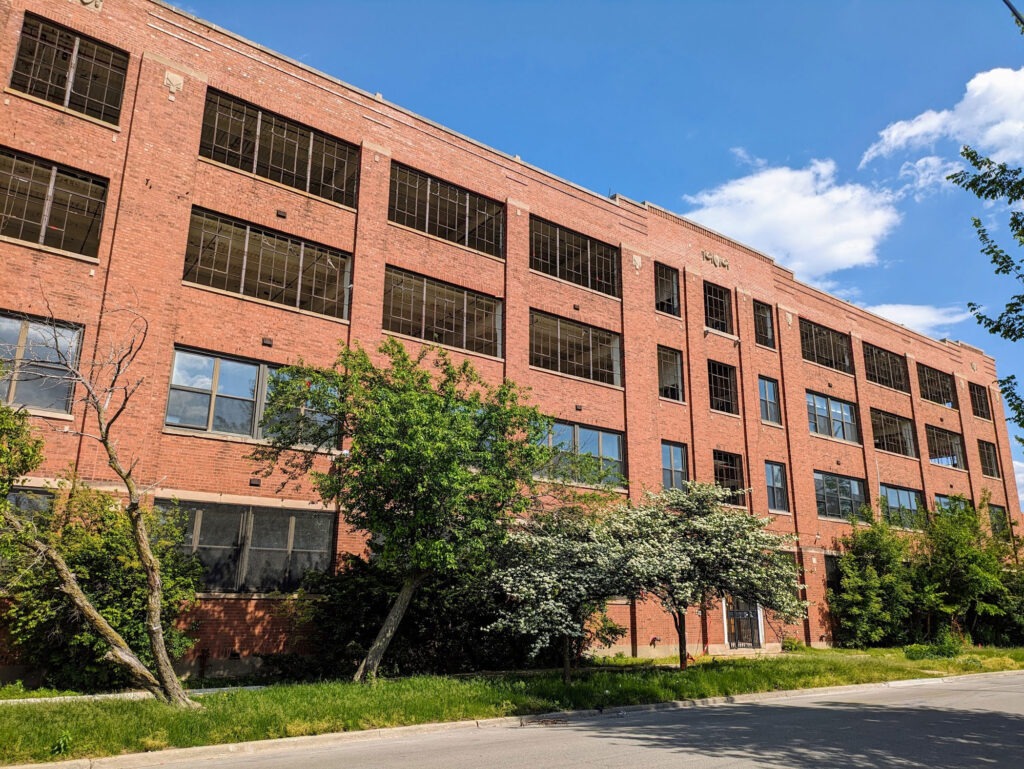
In April, as workers were performing remediation and prep work, resident Norvetta Landon filed a suit in the Circuit Court of Cook County seeking an injunction on the demolition of the buildings. In the filing, Landon highlighted the historic significance of the buildings, raised concerns about environmental contamination from demolition, and argued that the demolition of these buildings could negatively affect the overall quality of life for North Lawndale residents.
She included background research and summaries of the buildings prepared by Preservation Chicago, which earlier this year added the old industrial corridor to its list of most endangered buildings in the city. Legacy industrial users such as Turner Manufacturing and Western Felt Works had been originally based out of these structures and the buildings have ties to notable Chicago architects, such as Alfred Alschuler, who designed the London Guarantee Building and the original Chicago Mercantile Exchange Building.
On the same day that Landon filed the demolition injunction request, she also filed another suit against IDI Logistic that was focused on a community benefit agreement. In the pro se suit, Landon claimed that IDI Logistics had made a verbal agreement to provide $250,000 to non-profit Harmony International Development in exchange for a Class 6b tax incentive, which IDI indicated was “critical for the project to proceed” in a correspondence attached to the complaint.
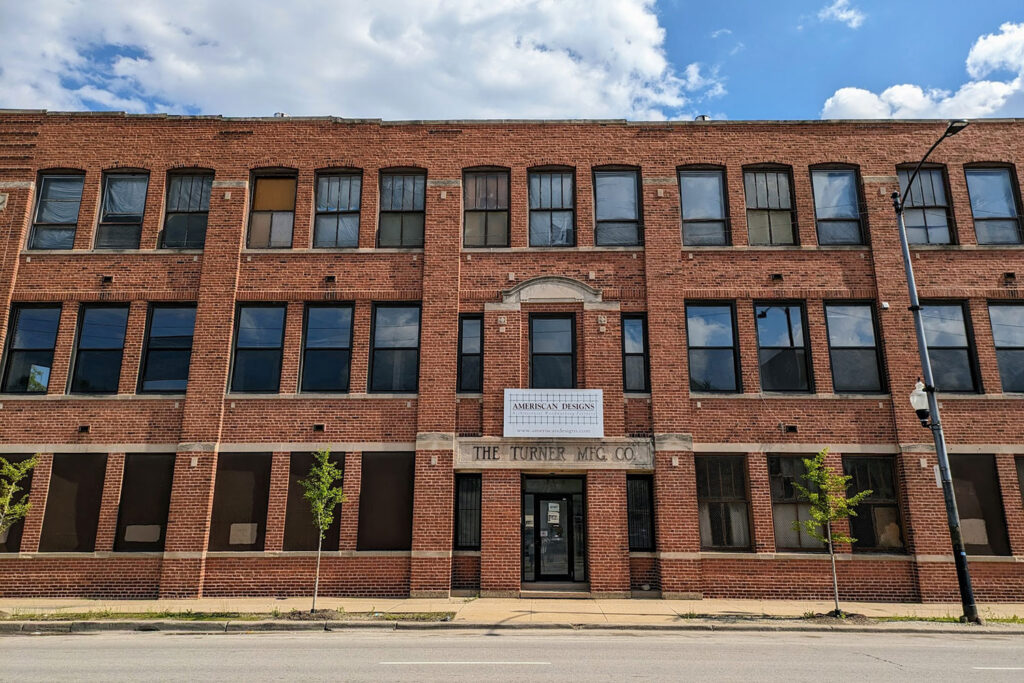
In the correspondence, IDI Logistics had initially offered to provide funds toward the construction of a dog park or community garden but indicated that any contribution to a community benefit would have to be in their proposal. IDI said that it would be open to providing $130,000 to local non-profits or businesses in lieu of a new park, but also noted that any agreement would have to be complete with a detailed plan for distribution and be approved by the city.
While no officers or staff members are listed on the website for Harmony International Development, Landon confirmed to Chicago that her daughter is the director of operations of the non-profit — which also shares a storefront with Landon’s Indelible Impressions Construction business. It’s worth noting that Landon appears on a list of individuals and contractors that are barred from city contracts.
Alderperson Rodriguez told Chicago that IDI Logistics did indeed agree to provide a higher level of support than the original $130,000 it earmarked for a community benefit, but had “backtracked” on the promise. He also said that Landon is one of 12 members of the advisory council for the development and that any grant or funds that IDI agrees to provide to the community would be spread out among several organizations and businesses, not just one.
Ultimately, the disagreement over the community benefit is another reason why he is unable to support the proposal at this time, Rodriguez said.
The Clock Is Ticking
While there remains speculation about jobs lost and gained, residents at Monday’s meeting said it’s likely that the logistics center would lead to a drastic uptick in truck traffic and diesel emissions in an area already witnessing significant heavy vehicle traffic.
Kim Wasserman, executive director of the Little Village Environmental Justice Organization (LVEJO) told Chicago that the community meeting process and debate surrounding IDI’s proposal for the neighborhood “speaks to environmental racism at its finest” and is an example of an industrial proposal being pitched “with a false bill of goods of jobs.” She said the situation felt reminiscent of Hilco’s redevelopment of the old Crawford Station in Little Village into a massive Target distribution center — particularly because an influx of truck traffic could have negative health and safety effects for North Lawndale residents.
LVEJO is conducting a new truck count in the area near the Ogden buildings, Wasserman said, which would help leaders and residents understand the implications of a logistics hub at the site. Once completed, the numbers will be added to the Chicago Truck Data Portal that the organization maintains with the Center for Neighborhood Technology. A recent count for nearby Archer Heights found that more than 5,000 large vehicles and trucks passed through the neighborhood in a single day — the most truck traffic seen in any community in Chicago.
And Wasserman is concerned that time is running out for community input or engagement.
“I think this is a classic example of where the neighborhood has two days between the presentation on a demolition — not even on the project — and when this is going to be voted on in front of the Chicago Plan Commission with little to no power to stop it,” she said. “It speaks to who has the power and who the system is built to benefit, and it is not built to benefit the community.”
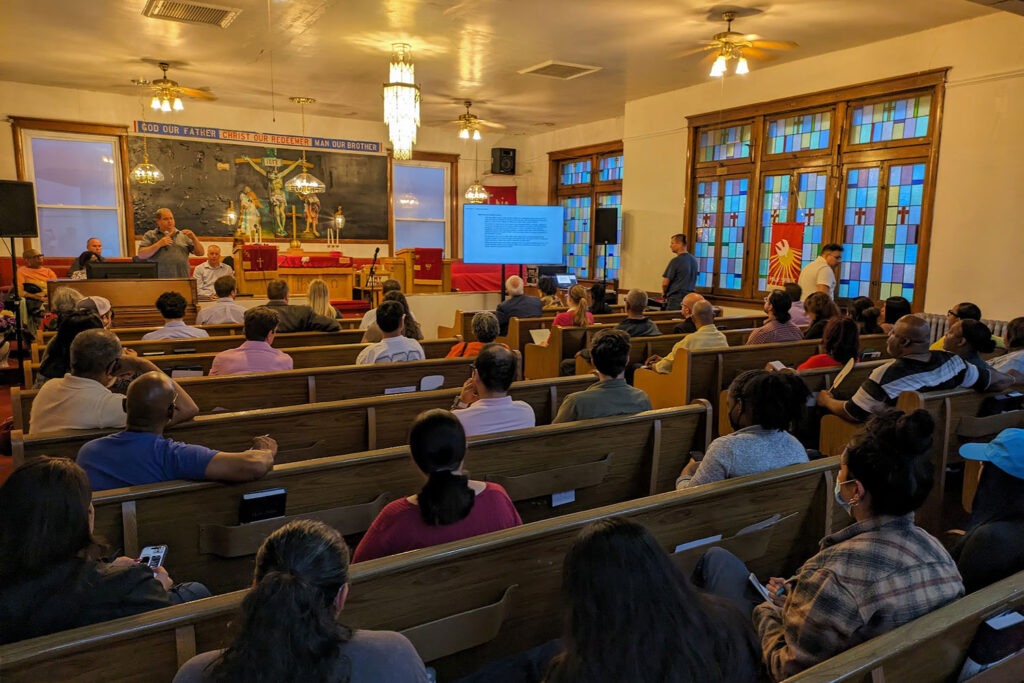
Lifelong North Lawndale resident Rochelle Jackson said that she had only found out about the proposal in the last few weeks and felt that the outreach process was not robust enough. In addition to concerns about truck traffic and a negligible gain in jobs, Jackson is worried about what could become of the immediate area if the old manufacturing buildings are torn down and the stretch of Ogden is left as one giant empty site — one that people might use as an illegal dumping ground, creating blight and potentially hindering future investment in the area. According to local real estate data portal Chicago Cityscape, there are nearly 2,800 vacant sites — specifically, properties without any buildings — in North Lawndale alone.
“North Lawndale is very rich in history and rich in land,” Jackson said. “They’re redeveloping it to make money and that’s it. They don’t care about our history. They don’t care about the people who live here. They only care about how much money is going to be made.”
Houlihan also warned of what could become if the buildings are left vacant.
“An empty building is a doomed building,” he said. “They already created this abandonment without having any plans approved or an agreement from the community. It’s their prerogative to remove the businesses, the tenants, and jobs from these buildings regardless of what the neighborhood wants.”
A worst case scenario would be the opposite of investment for North Lawndale, Houlihan added. Instead, the entire effort would have only led to further disinvestment and displacement.
“They think they can go into a community with a double-digit unemployment rate and clear an entire district of employment, wholesale. The clock is ticking. If these guys fail, it’s over. This will be a vacant lot forever.”



